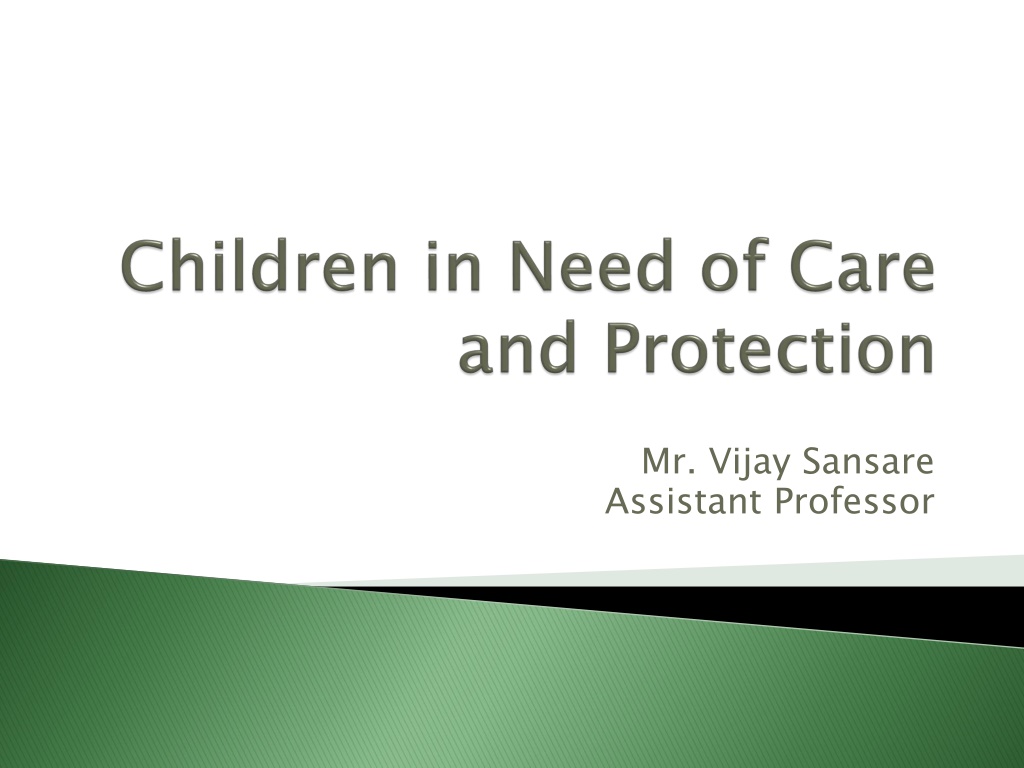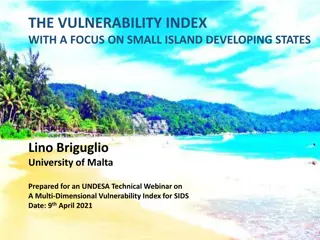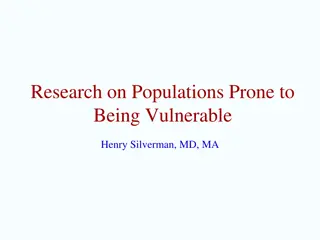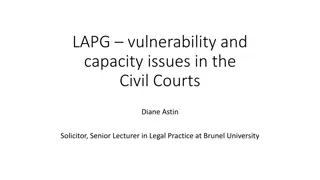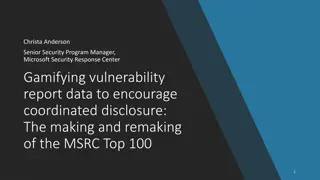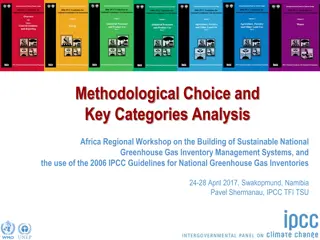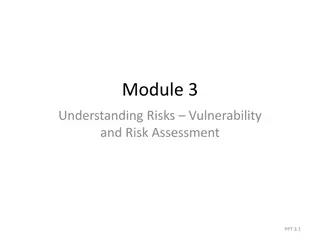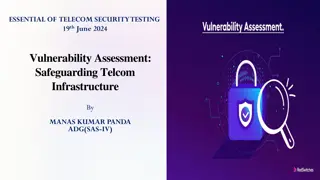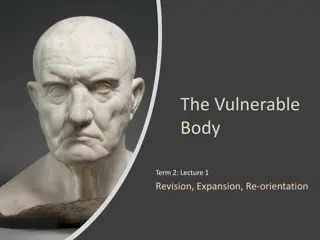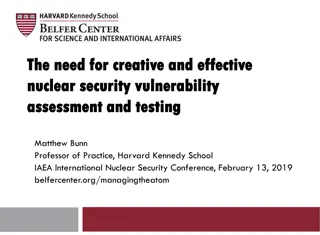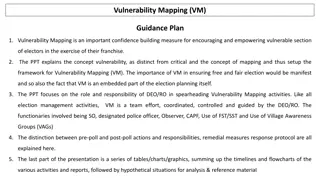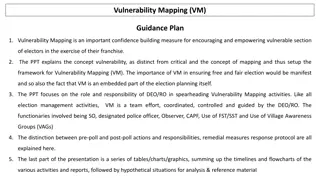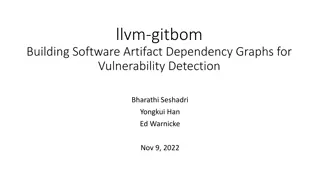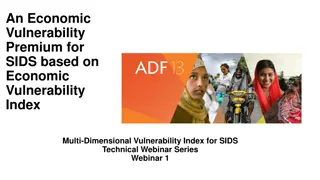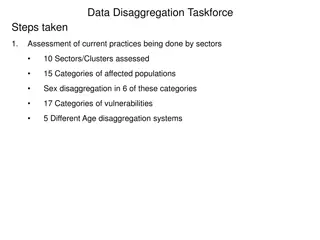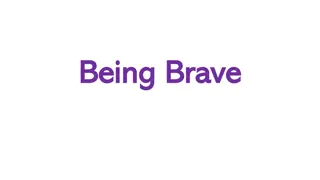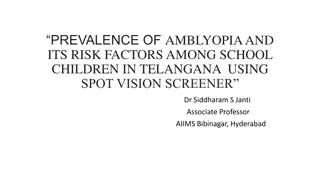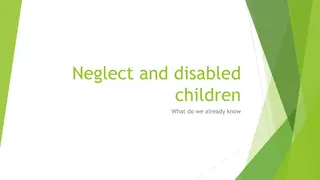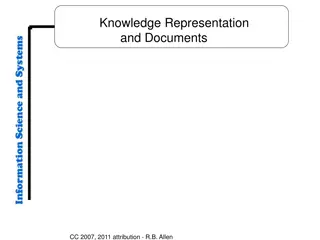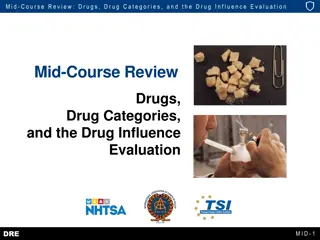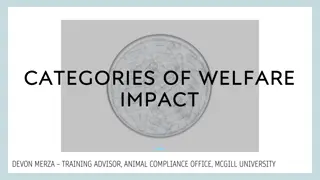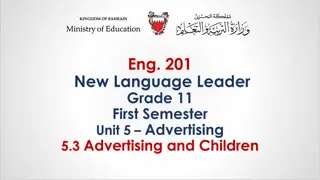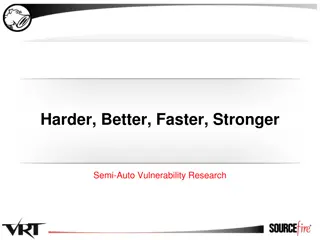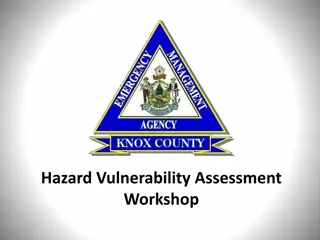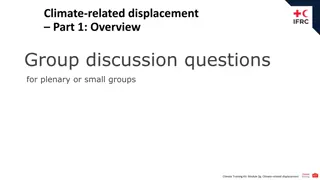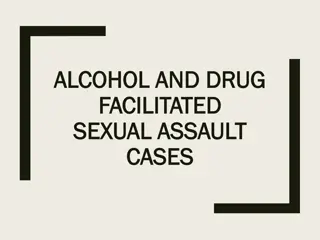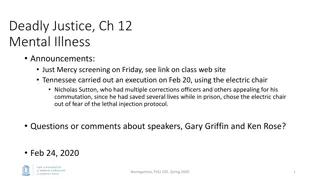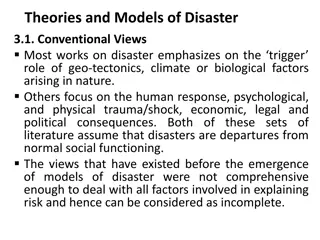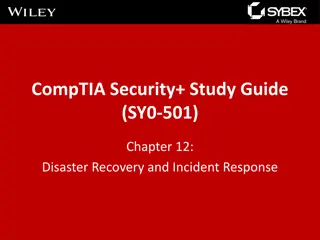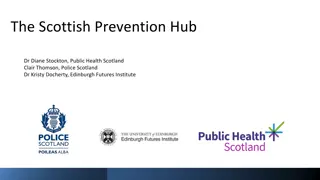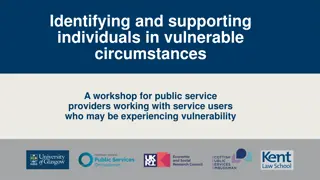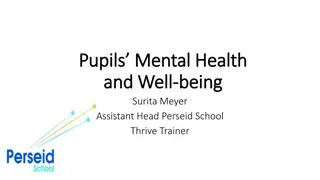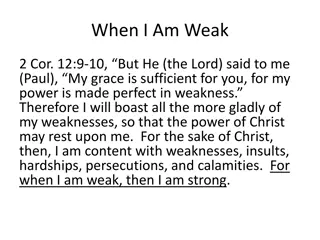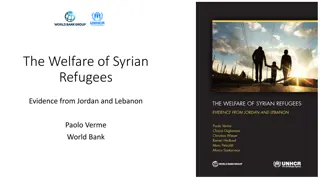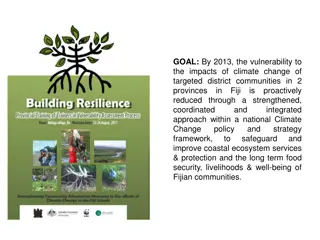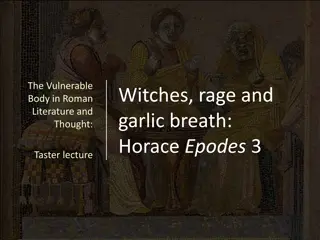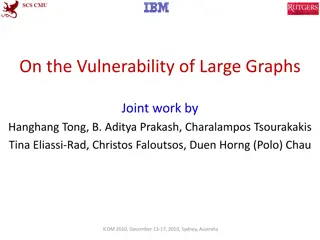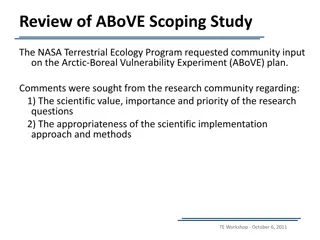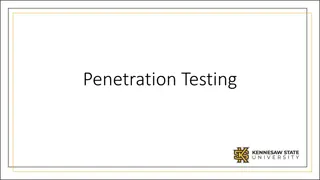Understanding Vulnerability in Children: Factors and Categories
Children are vulnerable to exploitation, abuse, and neglect due to various factors such as age, disabilities, behaviors, and powerlessness. The vulnerability of children is compounded by factors like illness, defenselessness, and passivity. Categories such as protection and children in conflict with the law help identify children in need of care and protection. In India, around 40% of children face difficult circumstances, including those without family support, forced into labor, abused, trafficked, or affected by substance abuse.
Download Presentation

Please find below an Image/Link to download the presentation.
The content on the website is provided AS IS for your information and personal use only. It may not be sold, licensed, or shared on other websites without obtaining consent from the author. Download presentation by click this link. If you encounter any issues during the download, it is possible that the publisher has removed the file from their server.
E N D
Presentation Transcript
Mr. Vijay Sansare Assistant Professor
All children due to their age are considered to be at risk for exploitation, abuse, violence and neglect. But vulnerability cannot be defined simply by age. Though age is one component, Vulnerability is also measured by the child's capability for self- protection. The question that arises is, are children capable of protecting themselves. Can defend against a dangerous situation or even recognise a dangerous situation is developing? children provide for their basic needs,
A child's vulnerability comes from various factors that hinder normally. vulnerability of children is further compounded by the following factors: Age within age Physical disabilities Mental disabilities Provocative behaviours Powerlessness Defencelessness Passivity Illness Invisible a child's ability to function and grow
ICPS categories: protection and children in conflict with law. Children in need of care and protection is defined as a child who: Doesn't have a home or shelter and no means to obtain such an abode Resides with a person(s) who has threatened to harm them and is likely to carry out that threat, harmed other children and hence is likely to kill, abuse or neglect the child. Is mentally or physically handicapped, or has an illness, terminal or incurable disease and has no one to provide and care for him/her. and JJA, children defines vulnerability need in two and in of care
Has a parent or guardian deemed unfit or unable to take care of the child. Is an orphan, has no family to take care of him/her, or is a runaway or missing child whose parents cannot be located after a reasonable search period. Is emotionally exploited. Is being trafficked or abusing drug substances. Is being abused for unthinkable gains or illegal activities. Is a victim of arm conflict, civil unrest or a natural disaster. being or is likely physically to be abused, sexual, mentally, tortured or or
Total number of children in India: 440 million Children in difficult circumstances: About 172 million or 40 per cent children. These children include: Children without family support, Children forced into labour, Abused/trafficked, children on streets, Children affected by substance abuse, children calamity etc. in armed conflict/civil unrest/natural
Street children or children living and working on the streets are a common sight yet exact numbers are not known. About 50,923 (1 % of the total number of children in Delhi) children are living and working on streets of Delhi. Almost 50 % migrant children in Delhi did not want to go back to their place of origin. About 67.3 % children felt they were in danger on the streets. (Study: Surviving the Streets (2011) Save the children study).
Child trafficking could be for: Sexual exploitation Illegal activities Labour Entertainment and sports Adoption Marriage
It is estimated that half a million children have been abducted and forced to work in India's cities. About 200,000 persons are trafficked into, within or through India every year ( US State Department). According to NHRC Report, only 10 % of human trafficking in India is international, while almost 90% is interstate NCRB reported 65,038 missing children in the country in 2012. NCRB reported that in 2004, as many as 2,265 cases of kidnapping and abduction of children qualified as forms of trafficking and were reported to the police. Of these, 1,593 cases were of kidnapping for marriage, 414 were for illicit sex, 92 for unlawful activity, 101 for prostitution and the rest for various other things like slavery, beggary and even selling body parts.
Most of these children (72 per cent) were between 16 and18 years of age. Twenty-five per cent were children aged 11-15 years. child prostitution through abduction is estimated to be 40 percent. The total percentage of Devadasis is 80 percent of the total number in prostitution. About 5 percent of the children come after the incidence of Rape. About 8 percent of children come to prostitution because of the incidence of Incest. About 10 percent of child prostitutes are children of prostitutes.
Children in Conflict with Law (CCL) (IPC Crimes) have increased by 13.6 per cent over 2012. (31,725 cases were registered in 2013 against 27,936 cases in 2012). Decrease of cases was observed under the crime head Counterfeiting, Arson, Riots, Dowry Deaths, Cheating and Dacoity in 2013 over 2012. Increase in incidents was found under the head: 'Assault on Women with intent to outrage her modesty' (132.3 %) followed by 'insult to the modesty of women' (70.5 %)and 'rape' (60.3 %).
https://womenchild.maharashtra.gov.in/cont entmi/innerpage/policies-ma.php http://www.childlineindia.org.in/vulnerable- children.htm National Institute of Public Cooperation and Child Development, 5, Siri Institutional Area, Hauz Khas, New Delhi- 110016
